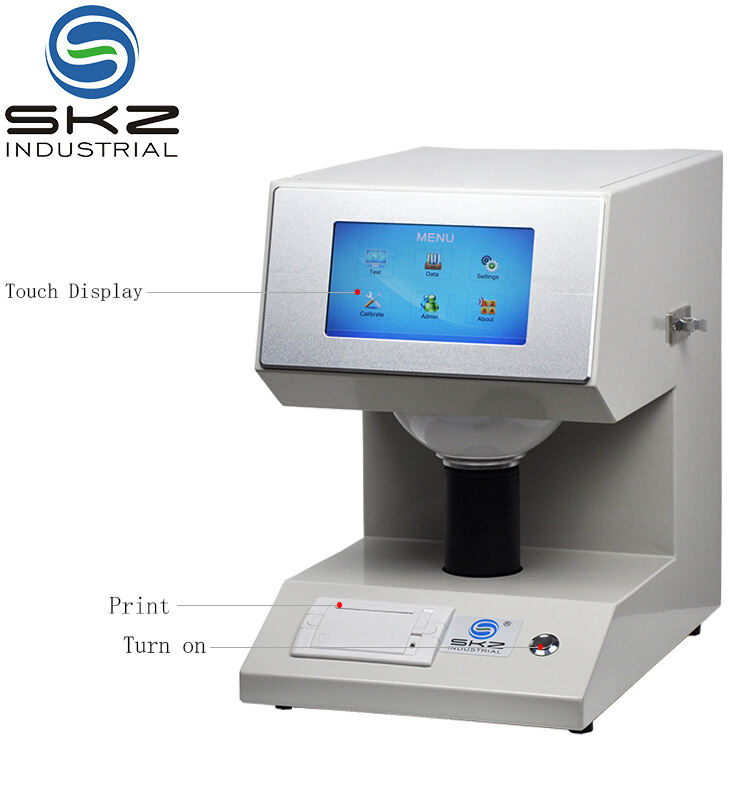The Importance of Moisture Control in Industrial and Construction Applications
Why Measure the Moisture Content of Wood: Ensuring Structural Integrity and Longevity
Too much moisture in wood causes all sorts of problems including warping, mold growth, and even structural failures. These issues alone cost American construction companies around $2.6 billion every year just for fixing them up according to NIST research from 2022. That's why moisture meters are so important they let contractors check if the wood has the right amount of dryness. The target range is generally between 6-9% for indoor work and about 12-15% for stuff going outside. Take flooring as an example. When the subfloor gets too damp beyond 12%, floors tend to fail four times more often than normal. A big study looked at over 1,200 commercial building projects back in 2023 and found exactly this pattern. Getting these measurements right upfront saves money down the road by avoiding those expensive repair jobs later on and keeps buildings standing strong for years to come.
Importance of Accurate Moisture Measurement for Quality Control in Manufacturing
Moisture problems in manufacturing can really mess up product quality across the board. When polymer pellets get above 0.5% moisture content, injection molding starts showing defects at around a 27% higher rate according to recent studies. For pharmaceuticals, tablet hardness fluctuates about plus or minus 18% if humidity isn't kept within proper ranges as noted by ASTM standards from last year. Getting real-time moisture readings through those industrial-strength meters makes all the difference for catching issues mid-production run. Take one cement facility that cut down on waste materials by roughly 15% simply by adding inline moisture testing for their limestone supply chain operations. These kinds of improvements highlight why manufacturers are increasingly investing in better moisture control systems these days.
How High-Precision Moisture Meters Improve Outcomes in Woodworking and DIY Projects
Use of Moisture Meters in Woodworking: From Milling to Final Finishing
Moisture meters with high precision play a big role in maintaining quality across all stages of woodworking. When working on mill runs, these tools spot hidden moisture differences inside the wood that might lead to warping once it gets cut up. Before drying starts, taking initial readings gives us our starting point for moisture content. After kiln drying is done, another round of checks tells if the wood actually hit those target equilibrium moisture levels specific to each type of wood species. For most indoor furniture work, getting that last reading under 12% moisture content makes all the difference. Without this final step, finishes tend to peel off and joints simply won't line up properly. According to recent studies cited by Family Handyman in 2025, around three out of every four defects found in finished wood products can be traced back to improper moisture handling at various points in this process.
Measuring Moisture Content in Wood for DIY Projects: Avoiding Warping and Cracking
Woodworkers wanting pro-level results should test their lumber when it arrives and check it again after letting it sit for around three days in the workshop. The wood needs time to get used to the humidity and temperature where it'll actually be worked on. When building things like tables or cabinet boxes, keeping the moisture content close to what's normal in the room (within about 2%) goes a long way toward avoiding those annoying gaps between boards during different seasons. Pinless moisture meters work really well for this kind of job since they let folks scan big sections of wood without leaving marks on finished pieces. Just run them across the surface and get readings without damaging anything precious.
When to Measure Moisture Content During Project Timelines
Strategic testing improves outcomes at three key stages:
- Material Selection: Screen lumber to exclude pieces above 19% MC
- Pre-Assembly: Ensure components are within 1–2% MC of each other to avoid stress-related failures
- Post-Finishing: Confirm stability before installation, especially in humidity-sensitive environments
Projects using this tri-phase approach reduce callbacks by 63% compared to those relying on single measurements.
Versatile Applications Across Materials: Wood, Grain, and Building Substrates
How to Measure Moisture in Wood Versus Concrete or Drywall: Adjusting for Material Density
Getting accurate readings from moisture meters depends on proper calibration for different materials. When checking wood, it's important to consider equilibrium moisture content or EMC, basically how much moisture the wood holds when balanced with the surrounding air humidity levels. Things get trickier with concrete and drywall since their readings need special adjustments based on things like material density and what they're actually made of. Recent research from last year found that people who didn't adjust their meters properly for concrete got readings off by as much as 18% compared to lab tests. These kinds of errors can really slow down projects and end up costing extra money for fixes that weren't needed in the first place.
Applications of Moisture Meters in Grain Storage and Agricultural Quality Control
In grain storage, moisture meters help prevent spoilage by detecting hotspots exceeding safe thresholds (typically 12–15%). Operators using continuous monitoring report 23% fewer crop losses annually than those relying on manual checks (USDA 2024), highlighting the benefits of proactive moisture management.
Optimizing Field and Workshop Use: Protocols and Emerging Monitoring Trends
How to measure the moisture content of wood accurately: Step-by-step protocol
Before taking measurements, make sure to calibrate the meter properly with a reference sample that's been tested before. When picking where to measure, avoid areas near knots or rough edges since these tend to throw off the results quite a bit. Press down on those metal pins or whatever sensor plate comes with the device until there's no gap between it and the wood surface. Take around three to five readings spread out across different parts of the material. Write down what shows up on average and check if it falls within the expected range for that particular type of wood. People who follow this approach instead of just grabbing one spot report about 34 percent fewer mistakes according to some research published last year in Wood Science Journal.
Controversy analysis: Spot checks vs. continuous monitoring in critical environments
Handheld meters still dominate workshop environments, but some sectors including pharmaceutical production and artifact conservation have started switching to internet connected monitoring systems. The big advantage? Getting instant warnings when humidity levels spike due to air conditioning issues or sudden weather shifts. Of course, there's pushback from budget-conscious businesses worried about the price tag on these smart sensor networks. A recent industry report from last year showed interesting results though. When manufacturers combined regular old-fashioned meter readings with backup automated systems, they cut down on wasted materials by around 22% in their wood working processes. Seems like finding that sweet spot between technology and tradition actually works pretty well in practice.
FAQ
What is the ideal moisture content for wood in indoor and outdoor applications?
For indoor applications, the ideal moisture content is between 6-9%. For outdoor applications, it should be around 12-15% to avoid issues like warping and structural failure.
How can moisture meters improve manufacturing quality control?
Moisture meters help catch defects mid-production by providing real-time readings. They improve the quality control process by ensuring that moisture levels are kept within the required ranges, reducing waste and defects significantly.
What's the difference between pin and pinless moisture meters?
Pin meters use electrodes to measure moisture levels and are suited for rough or uneven surfaces but cause minor surface damage. Pinless meters use electromagnetic waves for non-destructive surface readings, ideal for finished surfaces.
How do moisture meters benefit grain storage?
Continuous monitoring with moisture meters helps prevent spoilage by identifying dangerous hotspots. This proactive approach reduces crop losses significantly compared to manual checks.
What is the recommended protocol for measuring moisture content in wood?
The recommended protocol involves calibrating the meter, avoiding knots or edges, taking multiple readings, and averaging them for accurate results. This approach minimizes errors.
Table of Contents
- The Importance of Moisture Control in Industrial and Construction Applications
- How High-Precision Moisture Meters Improve Outcomes in Woodworking and DIY Projects
- Versatile Applications Across Materials: Wood, Grain, and Building Substrates
- Optimizing Field and Workshop Use: Protocols and Emerging Monitoring Trends
-
FAQ
- What is the ideal moisture content for wood in indoor and outdoor applications?
- How can moisture meters improve manufacturing quality control?
- What's the difference between pin and pinless moisture meters?
- How do moisture meters benefit grain storage?
- What is the recommended protocol for measuring moisture content in wood?

